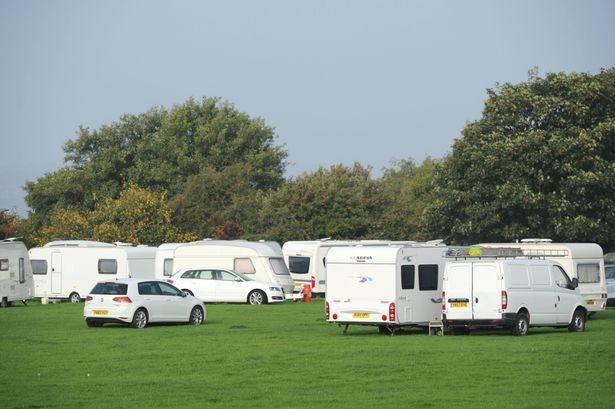 With the recent traveller incursions in Thames Ditton, two questions spring to mind :-
With the recent traveller incursions in Thames Ditton, two questions spring to mind :-
- Why does it take so long to get travellers moved from their illegal encampments in our green spaces?
- Why have some of the Council's anti-access measures installed last year been so ineffective?
1. Although it may seem that nothing is being done after a new traveller encampment appears, Elmbridge Council officials in fact begin to deal with it very promptly. They've provided the following explanation of their approach and procedures for dealing with travellers in Elmbridge.
The Police in certain circumstances, use their discretionary powers under section 61 of the Criminal Justice and Public Order Act 1994 to direct that the vehicles and their occupants and other property leave the land. This power may be used where the trespassers have caused damage to the land or property [and can be proved], or have used threatening, abusive or insulting words or behaviour, or there are 6 or more vehicles on the land and there are aggravating factors as detailed in ACPO Guidance on Unauthorised Encampments Section 5 and Surrey Police Force policy. This is very much an action of last resort and is most commonly used for large scale incursions.
Whilst it is open to the Council to enforce its byelaws, a breach of a Council Byelaw could only be dealt with against a named individual through a prosecution and court hearing. This would be time consuming to pursue, which would not improve the situation or bring about an eviction any sooner - which is why the Council in most cases recently have pursued a Notice of Direction to leave under Criminal Justice and Public Order Act 1994. The benefit of this process is that it allows us to deal with all of the vehicles as well as persons trespassing on the land.
Click here for the document detailing the Council's protocol for dealing with travellers.
2. The main anti-access measures employed by the Council are ditch-banking and lines of closely-spaced posts - metal where appropriate, but around many of our green spaces, especially those in Conservation Areas, wooden posts have been installed. In some places selective tree planting has been used.
The ditch-banking system has worked well, but it's clear the wooden posts present little obstacle to the travellers. At the Longmead Road site they reportedly used their vehicles to loosen the posts and then just pulled them out. So obviously the posts need to be secured more substantially. Again, the Council has provided the following explanation.
The wooden posts were installed by the Council’s Countryside Team on to Longmead Road as an urgent action following a previous incursion. Where the Countryside Team have installed posts in the past on this and other sites these have all be of a similar design i.e. without a bulbous end \ T bar. More recently a large contract was placed (with an external company) for bulbous posts on sites which had not previously been protected with wooden posts and had suffered incursions. The posts at Longmead Road will be fitted with T Bars at the earliest opportunity. Further conversations are also taking place as to the suitability of some ditching alongside the posts.
Of the other two recent encampments, access to the Ditton Common (Portsmouth Road) site was gained along a track, through a barrier which had not been locked (it now has been), and the Summer Road park site was accessed via an unlocked gate used by park maintenance vehicles (it is now locked).
It's not possible to stop all traveller access to commons and parks, and from time to time unauthorised encampments will be established; but Elmbridge Council is gradually making it more difficult for the travellers so that they will hopefully look elsewhere for their encampment sites.
For more information on dealing with travellers, go to the Surrey County Council web page on Gypsies and Travellers in Surrey.
